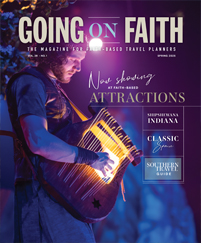In September, the Museum of the American Revolution hopes to reopen, welcoming visitors back as it follows health and safety guidelines. After such a difficult spring and summer, a trip to the Philadelphia museum makes good sense, given the lessons it shares about another challenging time in American history.
Open since April 2017, the museum has been praised for its engaging exhibits, which describe the American Revolution through the perspectives of people who were there. The multifaceted story they tell of how America rose up, battled Britain and forged a democracy helps put the challenges we now face in perspective.
New experiences highlight the reopening
When the museum opens, visitors also will see a new special exhibit, tied to this year’s centennial celebration of the ratification of the 19th amendment. “When Women Lost the Vote: A Revolutionary Story, 1776-1807” will open October 2 and run through next spring. It explores a little-known chapter in women’s voting in early America, the 31 years that women and free people of color in New Jersey legally held the right to vote. As with all the museum’s exhibits, it features personal items and people’s stories–journals, clothing, art, poll lists, a ballot box, even a letter written by Abigail Adams to her husband, John, in 1776, asking him to “remember the ladies.”
In the meantime, or even after the museum does reopen, groups can virtually step inside it at their convenience and enjoy numerous virtual experiences created to connect with audiences through the pandemic’s lockdowns, including a virtual tour of the women’s voting rights exhibit.
Leading up to an in-person tour, a virtual tour can familiarize travelers with the museum and help them focus on aspects that most interest them before they arrive in Philadelphia.
Using a computer, tablet, or smartphone visitors can begin their tour with a 360-degree whirl beneath the spreading limbs of a re-creation of Boston’s Liberty Tree and learn about the decade before the fight for independence began.
In each gallery, the virtual tour enables visitors to zoom in on details like the first book of poetry published by an enslaved African American, author and poet Phillis Wheatley, or life-size figures on horseback of Banastre Tarleton’s Loyalists Dragoons of the British, a loyalist corps of Americans who sided with the king. With a few quick clicks, they can enlarge artifacts and informational placards and activate audio overviews in each gallery.
Faith-based groups will love new, deeper discussions
For faith-based groups that want to learn more or have deeper discussions about particular issues, the museum’s Read the Revolution Speakers video series features historians and professors who talk about books they’ve written on topics ranging from slave revolts to Benedict Arnold. More information can be found by contacting the group sales team below.
For an entertaining and educational video addition to a luncheon or small gathering, groups can watch as interpreters portray apprentice bookbinders, carpenters and shoemakers or as museum curators demonstrate how to make colonial treats like gingerbread or cook a whole pumpkin over hot rocks as one starving solider who served under George Washington described doing in his journal.
For more information:
267-579-3525










